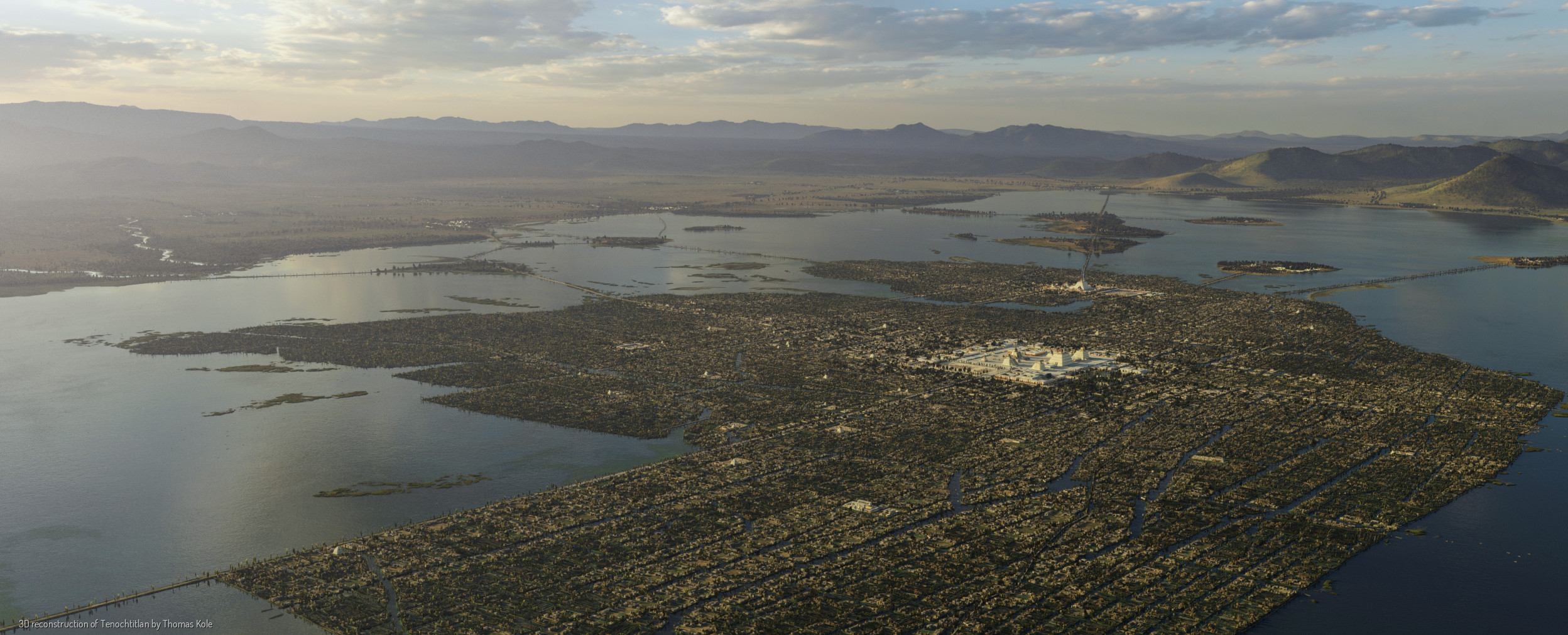Tenochtitlán
Hidden beneath the bustling streets of modern-day Mexico City lies the awe-inspiring remnants of one of history’s most magnificent civilizations: Tenochtitlán. Founded by the Mexica people in the 14th century, Tenochtitlán was the capital city of the Aztec Empire and a marvel of engineering, culture, and innovation. In this article, we will embark on a journey to explore the grandeur of Tenochtitlán, its rise and fall, and its enduring influence on contemporary Mexican culture.
The birth of Tenochtitlán
Tenochtitlán’s story begins with the nomadic Mexica people, who, following a centuries-long migration, arrived in the Valley of Mexico in the 13th century. According to legend, they were guided by the god Huitzilopochtli to settle on a swampy island in Lake Texcoco, where they founded their city. They ingeniously constructed a network of canals, causeways, and chinampas (artificial islands) to overcome the challenges of their watery environment.
The urban marvel
Tenochtitlán was nothing short of an urban marvel. It was a city of great beauty, adorned with temples, pyramids, and ornate buildings. The most iconic of these structures was the Templo Mayor, a twin pyramid complex dedicated to Huitzilopochtli and Tlaloc, the god of rain. The Templo Mayor was not only a religious center but also a symbol of the city’s prestige.
Cultural flourish
At its zenith, Tenochtitlán was a thriving center of culture, education, and the arts. The Aztecs developed a complex writing system, known as Nahuatl, which was used for religious texts, historical records, and poetry. Their skilled artisans crafted intricate pottery, textiles, and jewelry, showcasing their artistic prowess.
The marketplace of Tlatelolco
One of the most remarkable features of Tenochtitlán was the grand marketplace of Tlatelolco. Spanning a vast area, it was a hub of commerce where goods from all corners of the empire were traded. Here, one could find everything from exotic feathers and precious stones to food, textiles, and even slaves. The marketplace was a testament to the empire’s economic power.
The fall of Tenochtitlán
The glory of Tenochtitlán was tragically short-lived. In 1519, the Spanish conquistador Hernán Cortés arrived on the shores of Mexico with a small army. His arrival marked the beginning of the end for the Aztec Empire. Misguided alliances, internal conflicts, and devastating epidemics brought the once-mighty empire to its knees.
In 1521, after a brutal siege, Tenochtitlán fell to the Spanish forces, resulting in widespread destruction and the loss of countless lives. The Templo Mayor and other magnificent structures were razed to the ground, and the city’s riches were plundered. The legacy of Tenochtitlán had been forever altered.
The enduring legacy
While Tenochtitlán may have vanished as a physical city, its legacy endures in countless ways. The influence of the Aztecs can be seen in modern Mexican culture, from language and cuisine to art and architecture. The Mexican flag, with its emblematic eagle perched on a cactus, is a direct nod to the Aztec legend that foretold the founding of Tenochtitlán.
Rediscovering Tenochtitlán
The excavation and preservation of Tenochtitlán’s ruins began in the early 20th century and continue to this day. Today, visitors to Mexico City can explore the Templo Mayor archaeological site, which offers a fascinating glimpse into the city’s past. The site’s museum displays a rich collection of artifacts, providing insight into the Aztec way of life.
Tenochtitlán was more than just a city; it was a testament to the ingenuity and creativity of the Aztec people. Its rise and fall are a poignant chapter in the annals of history, a reminder of the complex interplay of culture, conquest, and destiny. As we stand amid the ruins of Tenochtitlán, we pay homage to the enduring legacy of this once-great civilization, a legacy that continues to shape the vibrant tapestry of modern Mexico.
Find more pictures of Tenochtitlán on the website of Thomas Kole – an incredible 3 D reproduction:
https://tenochtitlan.thomaskole.nl/

